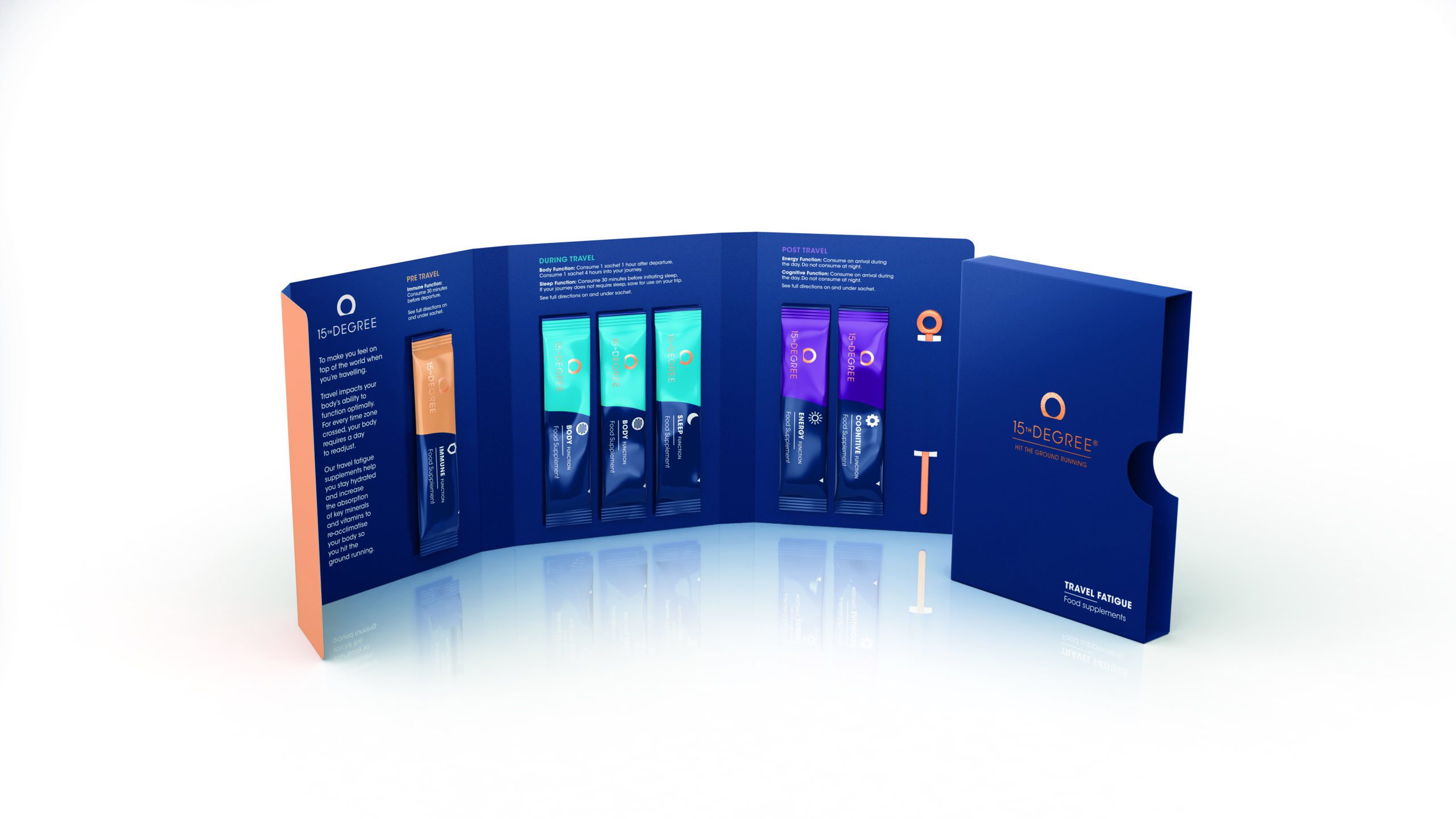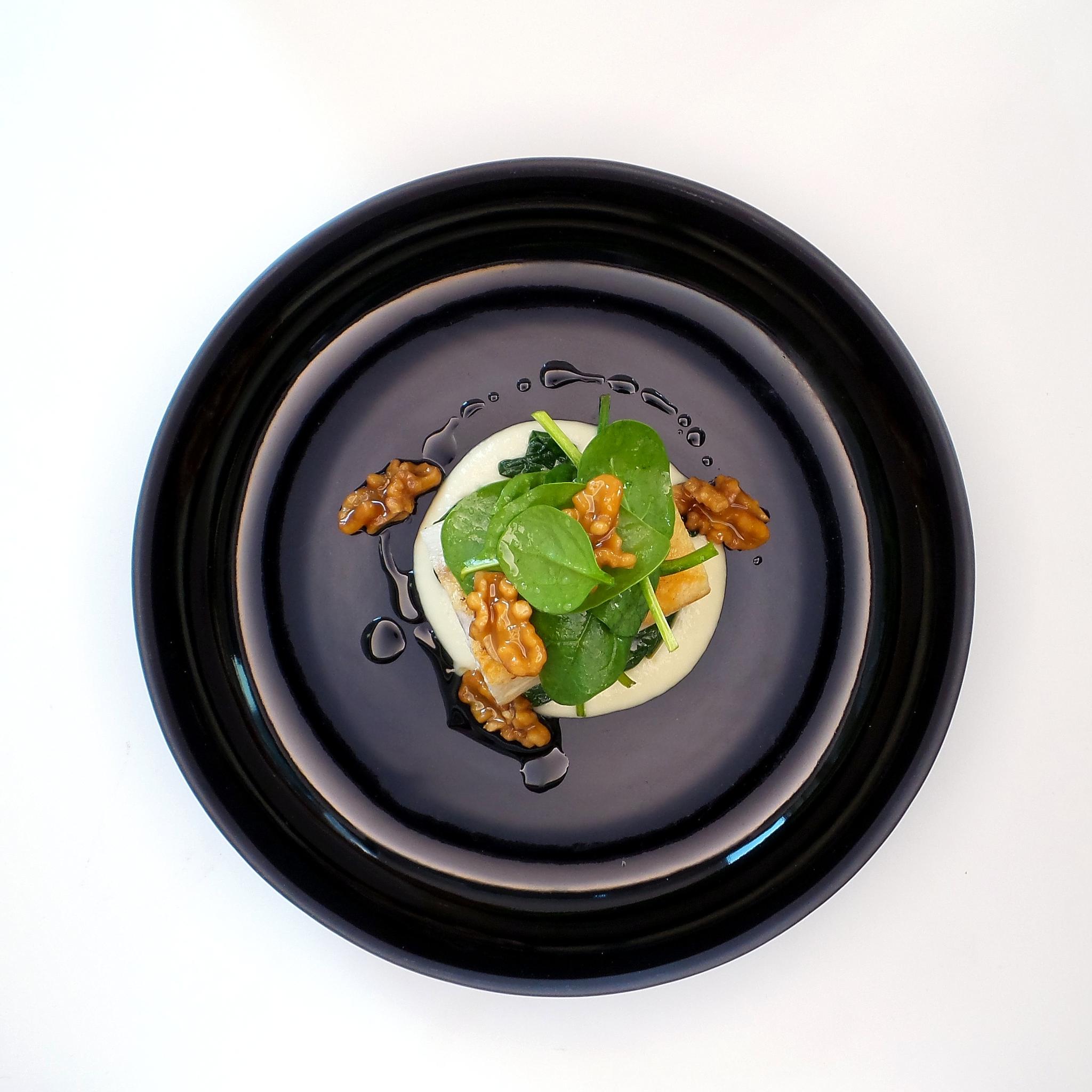Micronutrition’s Influence on In-Flight Appetite and Well-Being
Share

APEX Insight: The airline celebrity chef is being traded in for the micronutrient expert. What will passengers be eating next?
It’s Monday morning. A department head sends out a series of e-mails so absurd his colleagues begin to suspect he may have spiked his coffee. As the week progresses, he grows despondent and lethargic, ready to log off hours before the workday is over. The reason? He was ricocheted halfway across the world for a week of business meetings and made it back to his desk without a moment squandered. The scenario is not uncommon, says Papillon Luck, founder of 15th Degree – a supplement line designed to mitigate the adverse physiological effects of long-haul air travel – and a former associate of said department head.
“Business travelers are being asked to do the impossible: travel the world and perform physically and mentally at their peak as if they were in their home city,” Luck says. “On landing, most have to return to the office and continuously perform without any consideration for acclimatization.” As a way to help combat this, 15th Degree’s launch product, the Travel Fatigue Wallet, available online, includes five powder blends that target particular high-altitude ailments at different points in the travel journey.
A Physiological Undertaking
The body functions in question – cognition, sleep, energy, immunity, digestion and circulation – are impacted by the misalignment of the biological clock and the distinct characteristics of the aircraft cabin environment: reduced air pressure, a corresponding decrease in oxygen and a drier atmosphere. Each powder blend, developed in conjunction with a team of nutritionists and scientists, has been carefully conceived, right down to the recommended consumption time. The formula for digestion and circulation, for instance, which contains Pycnogenol, vitamin B3, nicotinamide, aloe vera, charcoal and live probiotic cultures, should be consumed one hour after departure and then again four hours into the journey.
The human body has about 100 trillion bacteria, both good and bad, living in the gastrointestinal tract – the “gut,” in common parlance. The good bacteria help us digest food and absorb nutrients, but can be depleted by stress, consuming antibiotics and poor diet. Research shows that disturbances to the circadian clock are another disruptor, wreaking nearly as much havoc on the microbes living in our gut as on our energy levels and sleep cycles.

“Chronobiology experts have observed and studied circadian rhythms in many classes of bacteria; the idea that gut bacteria have circadian rhythms is not in doubt,” says Christopher Babayode, nutritional therapist, author of Farewell Jet Lag and 15th Degree’s travel wellness and sleep expert. “To influence the function of gut flora, we overcome a disruptive or distressing gut environment with large numbers of good, friendly bacteria. Doing the same when flying would seem rational.” The live probiotic cultures in the powder include Lactobacillus acidophilus and Bifidobacteria, two probiotic strains proven to be among the most robust.
Food for Thought
Luck may have settled on the science of supplements, but her quest for healthier air travel began in the kitchen. “My vision was to have a healthy food box with an accompanying app, but this was disastrous for many reasons,” she shares. “We couldn’t white label a range of existing products, as every ‘healthy’ product analyzed by our nutritionists didn’t have enough quantities of any superfoods or ingredients to make a difference. They were just full of sugar.” Next, Luck tried to create recipes without sugar or allergens, but says nixing these elements proved difficult: “No one liked the energy snacks we created. It was depressing.”
Luck likens her initial idea to the Mood Food Box released in 2017 by now defunct Monarch Airlines, admitting that she “can’t fathom how they stopped the ice cream from melting, as we couldn’t.” Food scientist and experimental psychologist professor Charles Spence was behind Monarch’s mood-enhancing menu concept, along with chef Jozef Youssef, founder of gastronomy design studio Kitchen Theory.
“I provided the recommendations based on scientific research and Jozef and the team at Kitchen Theory created four tasty courses that incorporated the recommended ingredient strategies,” Spence says. “There was a very chewy rice item, building on the suggestion that chewing gum can help people relieve stress; black ice cream with licorice and echinacea to boost the immune system; and plenty of umami from tomato and mushroom powder to overcome inhibited taste perception in the air.” Umami – at this point widely recognized as the only flavor profile able to withstand low cabin pressure and humidity – is actually enhanced by the aircraft cabin’s 80 to 85 decibels of background noise (equivalent to the sound of city traffic in a car), Spence says.
For Spence, the ingredients of a meal are just as important as the accoutrements and environments that surround them. Indeed, his most recent book, Gastrophysics: The New Science of Eating, takes an in-depth look at how flavor is perceived through all of the senses. In it, he writes about British Airways’ “Sound Bite” soundtrack, which drew on his lab’s findings about the relationship between sound and taste.
“The material from which the fork and especially the spoon are made can modify the taste of food.” – Charles Spence, food scientist and experimental psychologist professor
“The idea was that passengers on long haul would order their food and then plug into a headset to get music to match what they were eating: either matching ethnicity of music with that of food – a bit of Italian opera with lasagna, for instance – or bringing out a sonic seasoning element. Sweet music sweetens food.” However, Spence admits he is still “struggling to create the perfect sonic salty backdrop.”
Calorie-free musical accompaniments are one way for airlines to scale back on salt and sugar overload; thoughtful cutlery design is another. “The material from which the fork and especially the spoon are made can modify the taste of food,” Spence writes. Foods eaten with stainless steel, for example, are rated as saltier than those eaten off copper or zinc, according to research conducted by Spence and a team of researchers from the Institute of Making in London. According to Spence, British Airways is among the airlines giving sweet and savory utensils a go.

Body Positive
While Luck has set her sights on maximizing micronutrient content and Spence on making the most of sensory cues, Margaret Allman-Farinelli, professor of Dietetics at the University of Sydney, says keeping well in flight is simpler than it seems. “Provided passengers normally consume healthy diets, the body has stores of vitamins and minerals that can supply our needs for weeks and months … The best advice is to eat a healthy diet before, during and after flights, and to go easy on the alcohol.”
Allman-Farinelli is a member of the Charles Perkins Centre, an academic institution working with Qantas to improve the passenger experience for what is slated to be one of the world’s longest-ever commercial flights: Perth to London, 17 hours nonstop aboard a Boeing 787 Dreamliner. The partnership involves research into the cabin environment, strategies to counteract jet lag, menu design and more, and has already yielded a customized probiotic cold-pressed juice shot and a trial during which passengers were given wearable technology to measure the impact of ultra long-haul travel on mental state, immune function and sleep patterns.
While the menu for the route, scheduled to take off on March 24, is yet to be determined, Allman-Farinelli suggests it won’t stray too far from the basics: fruits and vegetables, grain products, a protein and a dietary source of calcium. “The amino acid tryptophan, which is found in high-protein foods like lean red meat, chicken, fish, cheese, nuts and soy, is a precursor of the serotonin and melatonin pathway in the brain,” she says. “When we consume this amino acid with adequate carbohydrates, it enables tryptophan to enter the brain and produce more melatonin for better sleep.”
But the more parties turning to food science to up their wellness offerings, the more hypotheses proposed. And airline catering supplier LSG Sky Chefs, which counts among its clients Lufthansa, TAP Air Portugal, LATAM and Delta Air Lines, has come up with yet another approach. “Our bodies typically take longer to digest meals based on fat, animal protein and whole grain,” says Bernadette Murg, a nutritionist working on LSG Group’s FlyYourVeda menu concept. “When such meals are eaten on a night flight, many people encounter problems falling asleep, which is why the FlyYourVeda relaxing meals are based on plant proteins and vegetables that are easy to digest.” Think warm black salsify and nutmeg soup, and sweet potato-pumpkin ragout. For passengers who’d rather clock into work than conk out on the armrest, the FlyYourVeda activating menu is replete with brain foods like walnuts, avocados, berries and eggs.
“The body has stores of vitamins and minerals that can supply our needs for weeks and months.” – Margaret Allman-Farinelli, dietetics professor
Although distinct in composition and consequence, both FlyYourVeda menus are designed to counteract an unsavory physiological truth: Intestinal gas expands at high altitude. “We’ve decided not to include food that makes you feel full and bloated, but instead combine ingredients in a novel way to create dishes that really help you feel comfortable during a flight,” Murg says.
In the enduring pursuit for passenger comfort, airlines have traditionally been more concerned with the aircraft seat than the inner workings of the body seated in it. But then again, it hasn’t been that long that wellness bloggers from every corner of the Internet have been touting the unexpected benefits of turmeric and the ABCs of gut flora. “A decade ago, when travelers were less aware or interested in their wellness, airlines could ‘get away’ with not focusing on it,” Luck says. “Now, they have no option but to take this seriously. If they don’t, passengers will become loyal to the airline that does build a proposition around their wellness – not just the act of transporting them from A to B.”
“Serving You Well,” was originally published in the 8.1 February/March issue of APEX Experience magazine.


